The following is a guest post. I almost never do them, but when someone as prominent in the tenkara community asks for one as Jason Sparks, my ears perk up and I listen. Here are a few more of his great theories on fly design and presentation …
There have been several points of conversation in the tenkara community over the years about the origins, practice and practicality of having one single fly pattern in your box. Of those points discussed, one of them struck my fancy and I have practiced it several times in recent years. That was to use a “one fly” approach to learn a few things about fishing. What did I think I was going to learn from tossing the same fly over and over for a few thousand casts? I guess that for starters, I’d get really good at casting that fly. I’m not sure I thought much past that when I did this the first time around.
I said that I have practiced this several times now. Let me share that my parameter for this was to use the same fly exclusively for a thirty day period, every time I went out. At the time, I was putting in about 35 hours a month or more in wild trout waters of the Blue Ridge mountains. I never counted them, but it was tens of thousands of casts and I quickly learned how to cast that fly. It was all the other stuff I learned that I never counted on. Those are the things that truly improved my angling skill.
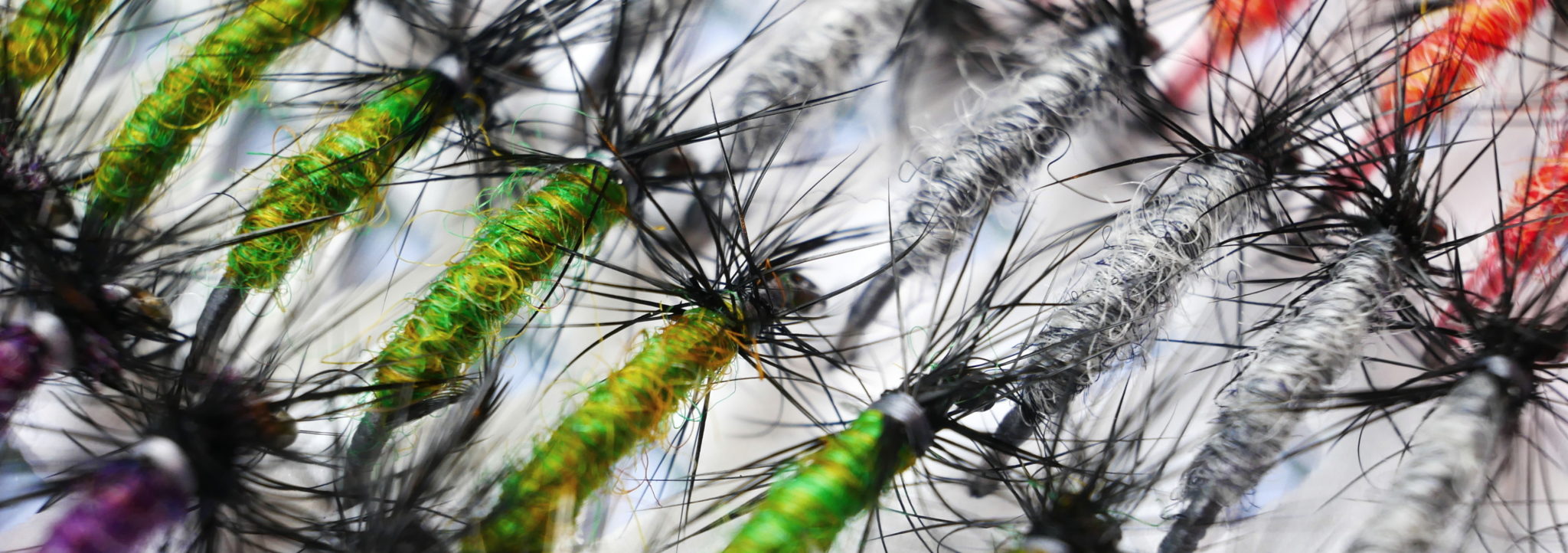
A quick word about the things I learned for casting the same fly a thousand times. I learned how to pinpoint cast the wet weight of that one fly. There was the sink rate I got comfortable with. There was the hackle movement in micro-currents of the dead drift that I noticed. How specific manipulations imparted specific movements to the fly. How hook size (#10 vs. #14) and wire gauge (light vs. heavy) helped me keep the fly high in the water column or sink it faster to the depths. Sling-shot casting it… and much more.
Having this “one fly” already selected eliminated the option to change the fly pattern for the day. Because if I wasn’t catching fish, it was the flies fault right? This protocol allowed me to focus on all the other aspects of angling. I can’t change the fly, so what else should I be considering? I was completing self-learning exercises in my own stream side clinic. I was teaching myself to be a better angler. I strongly encourage you to undertake this at some time, in some fashion that fits you. You will become a better angler for it.
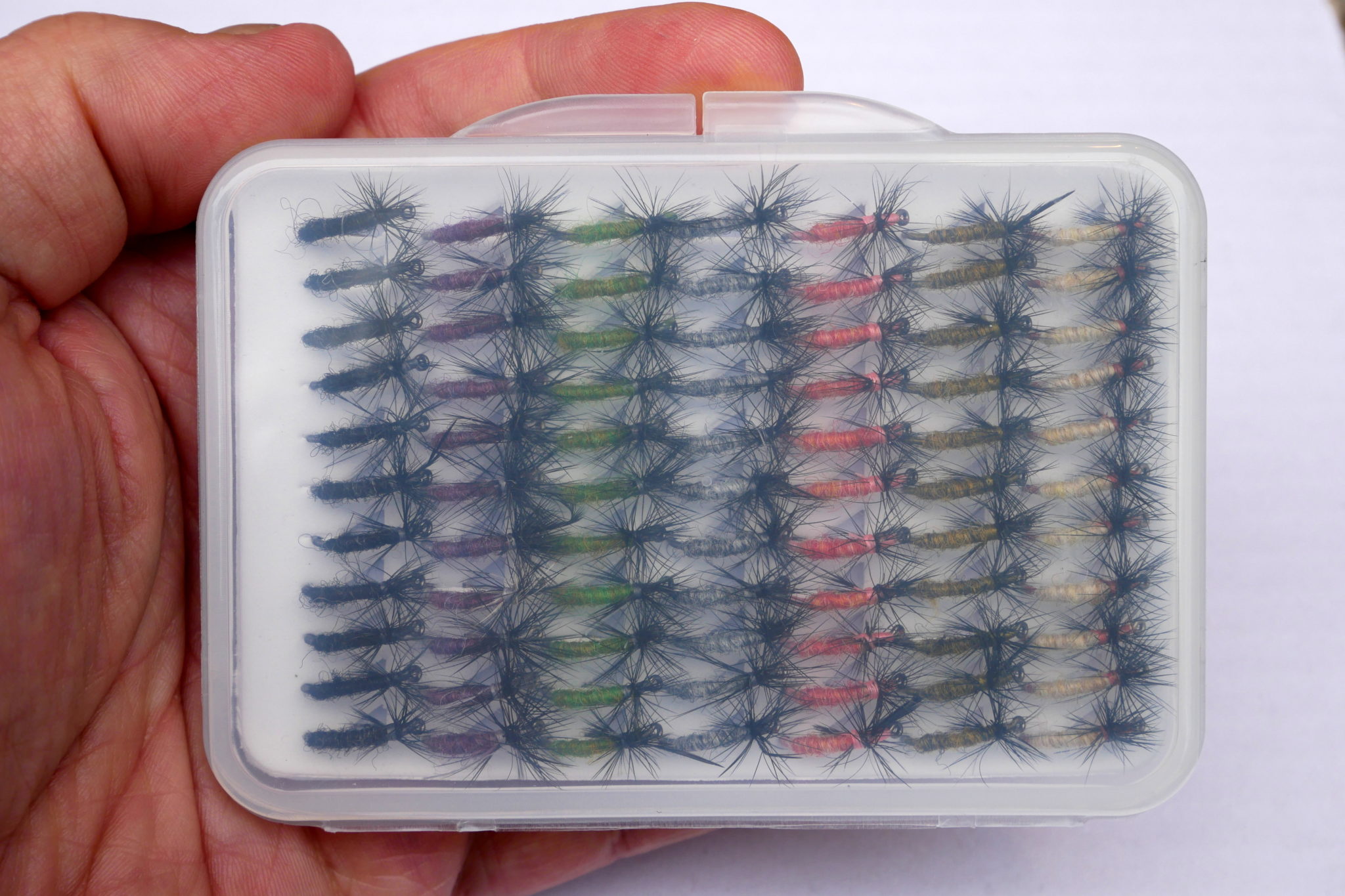
So, what do we understand about the importance of color in our flies? I can almost see the wheels turning in your head as you are recalling memories of things you read about effective colors for fishing. I’m not asking about what you know about fly pattern coloring because you read it in a prestigious rag, trusted your dandy-pandy hatch chart or some Pennsyltucky anglers gospel blog. I’m asking what do YOU know about fly colors? How did you learn it? Have you practiced it? Have you verified your conclusions? Do you know this because you have tried and true experience on the water with these color choices? Maybe it is about time you found out for yourself.
I had this idea to tie up another “one fly” box and incorporate colors into it. I chose to use a short stiff hackle version of my GnarlyFly pattern. Let’s face it, this is my confidence pattern and I know how to fish it. I know what it does. I’ve cast it tens of thousands of times and caught a thousand fish on it. This choice gives me the most “known” aspects so that my change variable is color. That is probably as scientific as I can get it. Seven rows of eleven flies in seven different colors with black hackle.
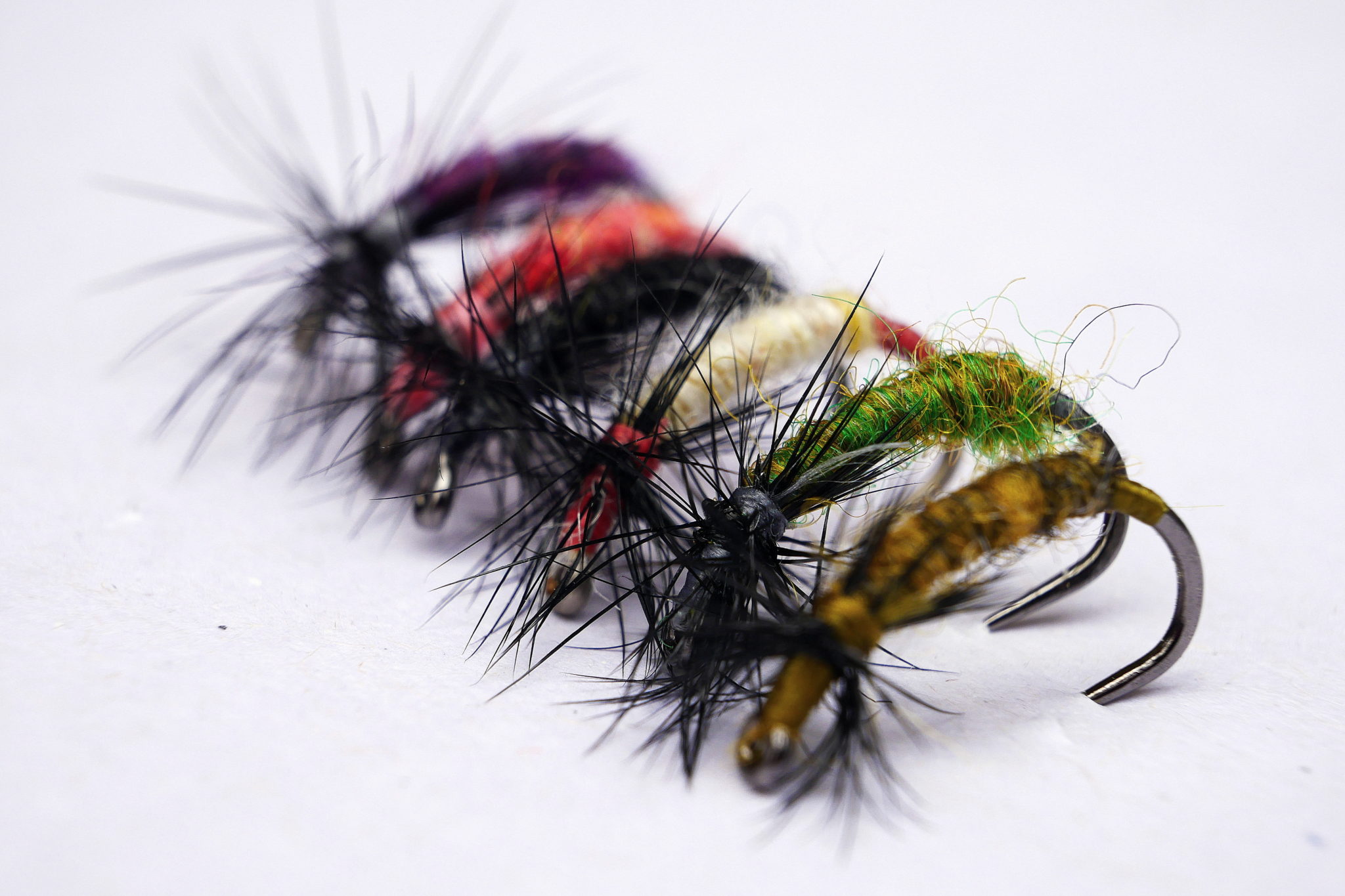
For those that are interested, I’ve used the Allen N203BL barbless scud hook in a size 10. The yarns I used are Shetland 100% wool yarns in colors from Jamieson’s Shetland Spindrift of: bracken and salmon; and Jamieson & Smith (2 ply jumper weight) of: black heather, medium purple, green/yellow, grey and burnt cream. These are weightless. I used two turns of a short stiff black rooster feather from Whiting.
I hope to learn for myself how fly color affects strike count related to species choice, water clarity, available light and expect to uncover a few things I haven’t even though of yet. If I am lucky, this will be another round of self learning with successful results. It is the “outside of the box” thinking that runs through my head most days that drives my exploration in fly tying ideas and fly fishing tactics. What will I learn here?
If you have read one book about fishing, then you have read one book about fishing. You may know everything about fishing that one book shared, but what else are you missing? Read several books and learn from them all. That is a smart plan. Let me challenge you to some self discovery when it comes to fishing. There is no paycheck involved and eventually you learn that your catch rate is not measured by anyone but yourself. Press your knowledge on what “you know you know”, and discover the things that “you didn’t know that you didn’t know”. You are your own best mentor sometimes.
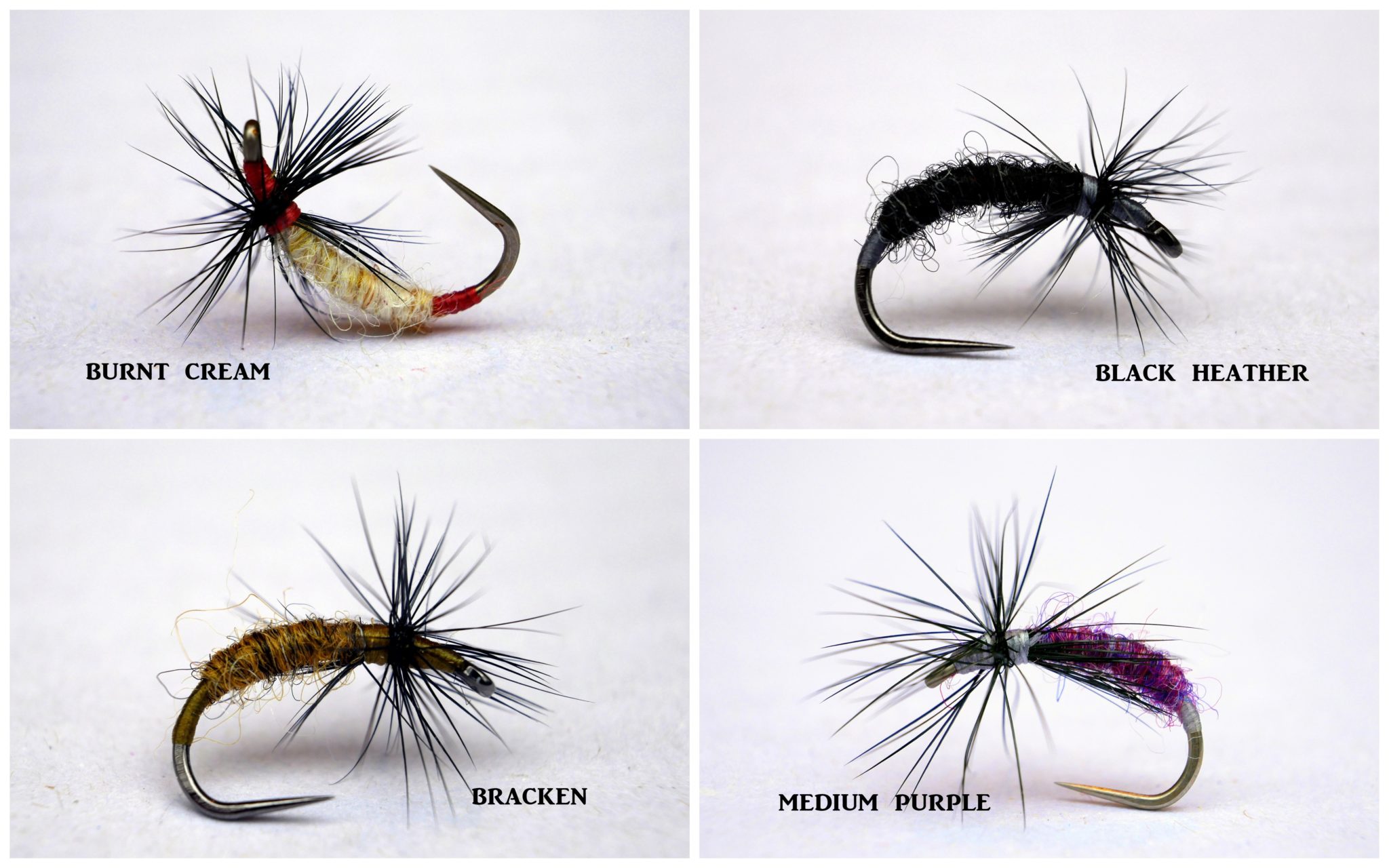
The idea for this multi-color one fly box came from a random thought one day that I managed to grab before it escaped. Sometimes those fleeting thoughts offer a lot of opportunity. If you haven’t spent focused time learning to control and successfully use one fly pattern, I encourage you to do so. If you have, you might try a multi-color effort like this. Take the opportunity to challenge yourself in some fashion next time you get your toes at the edge of the water. Do something different and do it long enough until you learn something from it. Take control of your own angling skill set and develop it in ways and exercises that make sense for you.
I’d love to know what you think of my idea here for the little 77 fly box. Better yet, I’d love to hear what ideas popped in your head while you were reading it. How are you going to take that idea and find a way to practice it until you learn with it? What are you going to try this season to increase your angling skill?
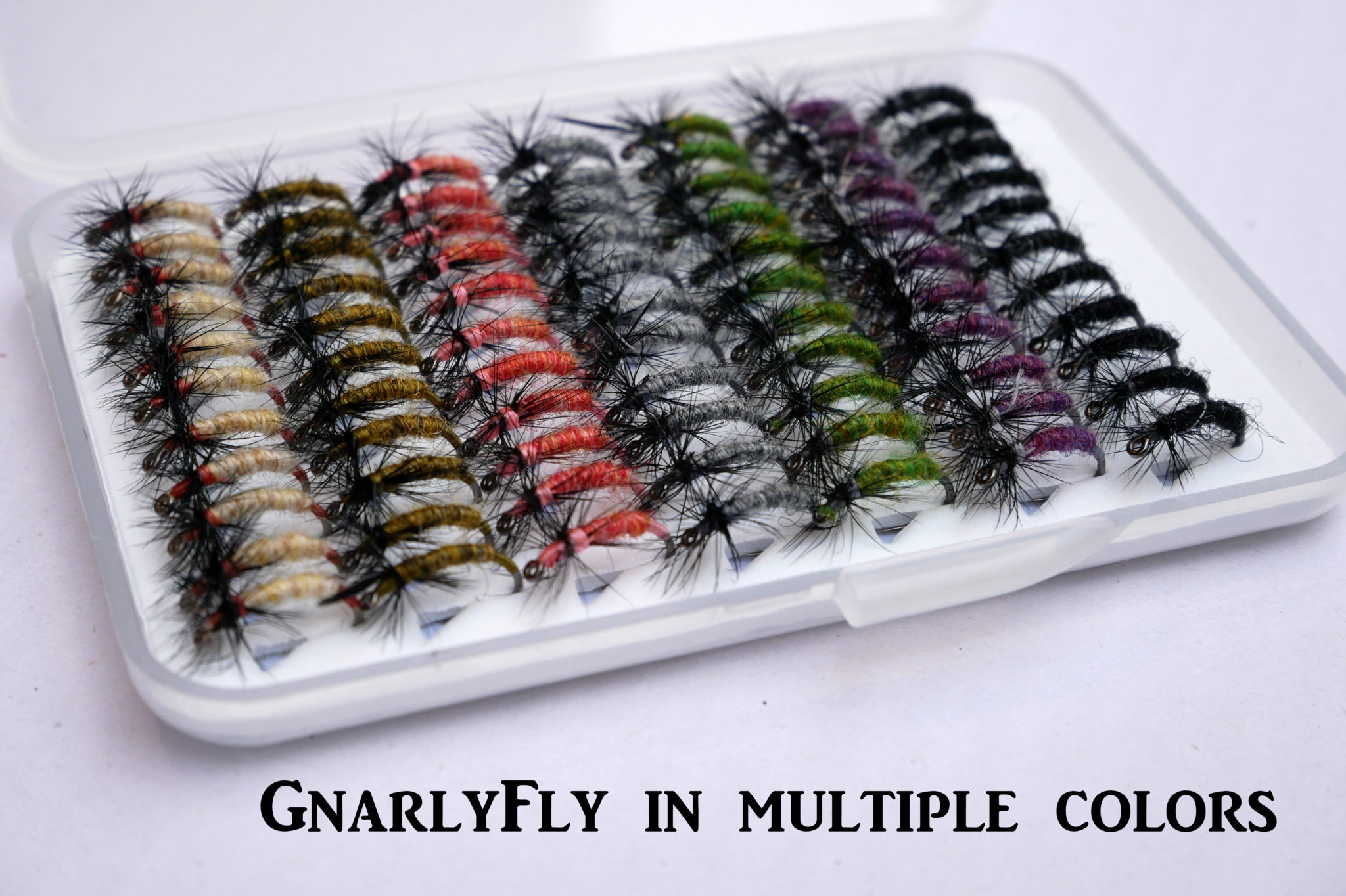








It’s funny when I saw the thumbnail for this entry in TenkaraTalk I knew they were Jason’s flies! He has a unique style of his own that’s instantly recognizable!
Great post, I’m actually a 2 fly guy. All my flies are wool body in either stiff hackle or soft hackle. I like soft hackle in faster water dead drift mode, # 10 Fulling mill heavy wire hook. Although in the last year I’ve been using the stiff hackle more and more, it’s much more versatile in almost all conditions. As far as color choice, my experience fishing western NC has been varied. I fish twice a week year round, high water,low water , cold or hot. So for what it’s worth, this has been what I have found. In the spring, like right now, I move toward lighter colors mostly Spindrift oyster with tan or white hackle or Spindrift sunset with pheasant hackle. Summer is oyster with dark tan hackle. When the weather starts turning cooler in early fall I use Spindrift albreta purple with black hackle. Winter time I go dark, Spindrift mirry dancer with black stiff hackle or pheasant soft hackle,. I f I had to pick just one to use year round it would be sunset with black hackle, it seems to catch fish when nothing else is working. I’ll attach a photo of the colors I use.
Most fish are predators, and of all the various senses they have for locating their prey, vision is the most important one. So to eat our flies, fish need to be able to see our flies in the various water color conditions. Water comes in an endless veriaty of 3 primary colors – Blue for clear water, Green for algae stained waters, and Red/Brown for turbid waters. Here is a link to an article that illustrates what happens when you use green, blue, and red fly tying materials on your flies fished in those same colors of waters. Please note the loss of contrast that green shows in green colored water, the loss blue has when it is viewed in blue colored water, and the same with red materials used in red/brown colored waters. As anglers, we want to make our flies easy for the fish to see.
The first photo in the series is of a stack of Larry La Rue’s Custom Painted Lures as they appear in normal artificial or day light conditions, then the same stack of lures as they would appear in green, blue, and in red colored waters. Its a real eye opener! Here is the link: https://thefishsniper.com/pdfs/fishalaska_may2010.pdf 14
Although this book has nothing to do with Tenkara and almost nothing to do with fly fishing, it has a lot to do with what all anglers presenting Artificial Baits need to know to catch more fish. In the past I thought that The Master Angler, Using color technology to catch more fish, was out of print. It is available directly from the publisher here: https://www.hancockhouse.com/collections/all-titles/products/master-angler
Jason, can you tell me the number that goes along with each color? I cant find half of these colors. Thanks.
Michael Pruybis,
Here are the colors I selected for this box.
Jamieson’s Shetland Spindrift 100% wool yarns:
Bracken #231
Salmon #301
*Other great ones from this manufacturer are:
Wren #246
Rye #140
Yellow Ochre #230
Jamieson and Smith (2ply jumper weight) 100% Shetland wool yarns:
Medium Gray #27
Medium Purple #133
Black Heather #81
Green / Yellow #FC 11
Burnt Cream #FC43
I hope you find a few colors that really work for you.
J. Sparks
Hello Jason,
After 3 years, any regrets? Did it work?
Thanks!
None. This proved to be an excellent exercise is learning and adapting. The color selection I chose offered a great selection in different lighting conditions and water clarity.
Dayne, Thanks for recognizing my fly craft and style of photography. I appreciate that.
J Sparks.
Ok Jason, I’m taking up the challenge, For the last week I’v only been using one fly, kinda a sloppy version of your gnarly fly. This is what I learned just today, I was fishing a plunge pool where I could see fish feeding but could not get a hit fishing upstream dead drift or using a pulse action. Normally I would have changed flies to get a response, but instead I took three steps upstream to fish the same spot from a different angle. Much to my amazement I caught 2 Rainbows in 5 casts in the exact same spot. Then later in the day the fish started feeding on the surface, I don’t fish drys but I was able to catch fish by keeping the rod tip high and the fly just under the surface. Bottom line, 21 fish on one fly and a giant amount of satisfaction. Still more to learn but I’m psyched!
Don Lux,
That is an amazing story. I don’t like to accept that I have learned something after doing it once. At that point I have been exposed to the lesson. When I can achieve repeatable results, then I’ve learned it. You stepped out of your own routine of changing that fly and decided to try something different. That commitment to the fly forced you to adapt real angling skill. Those are the things that make you a better angler. Excellent. I am so glad to here that you pushed on yourself and had great results today. Know that next time the results may not be so grand. That should mean that you have to push harder to adapt and learn.
Awesome story. Thanks again for sharing it. ~J. Sparks
Jason, I thought you might like an update on how the one fly project has been going. Some of the things I’ve learned in the last 3 weeks are skating a fly, very bizarre to me that fish turn on to this unnatural looking technique . I actually discovered this while stopping to eat a cracker and had my fly dragging in the current, I didn’t know that this was a purposely used tactic until later. I’ve also been working on my pulse movements, some days they want very slow gentle pulses and then I had days when they wanted very violent pulses. Turns out violent pulses and skating usually work on the same day and gentle pulses seem to work on days when dead drifting was also working. As of late I’ve been working on how to use the wind instead of fighting it, still a lot to learn there but the way the wind has been lately I’m getting plenty of practice. Anyway results so far, 10 days of fishing,best day 43 fish worst day 4 fish with the same fly but using 2 different colors. Sunset and Mirrydancer spindrift are the two I’ve been using. The secret to this project was not bringing other flies with me to tempt me into switching when things got slow and to not be afraid to try experiment with new ideas.
Hey Donald, I can’t tell you how many times I hooked a fish while my fly was dragging in the water as I was lighting a cigarette and not even paying attention. LOL. Sounds like you’re having fun playing with the method.
oops wrong picture
Thanks, please ignore the photo of the kitty waffle, my wife made a special breakfast and I mixed up the photos.
I have caught many juvenile rainbow trout by skating the fly on the surface, right in the riffle. The small trout will dart up from the bottom and nail it. It is a fun way to study fish behavior and learn about fly performance.